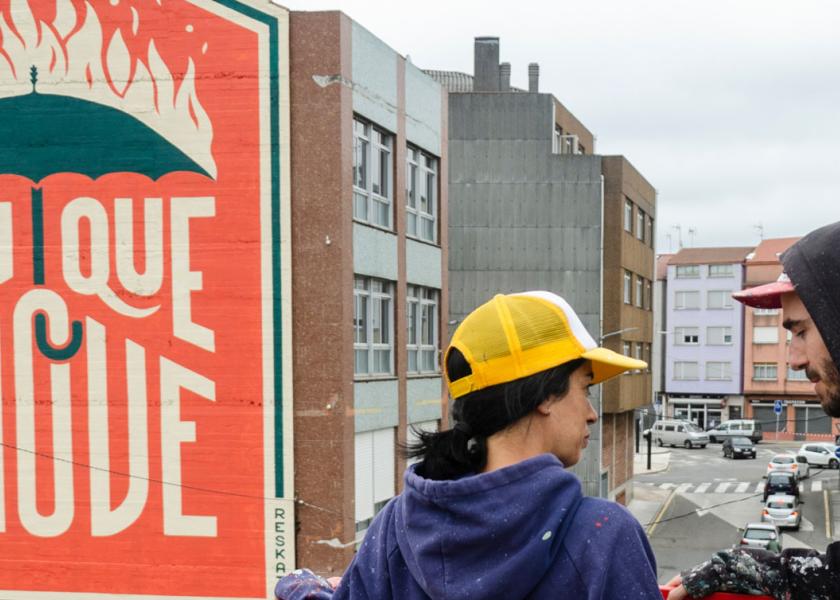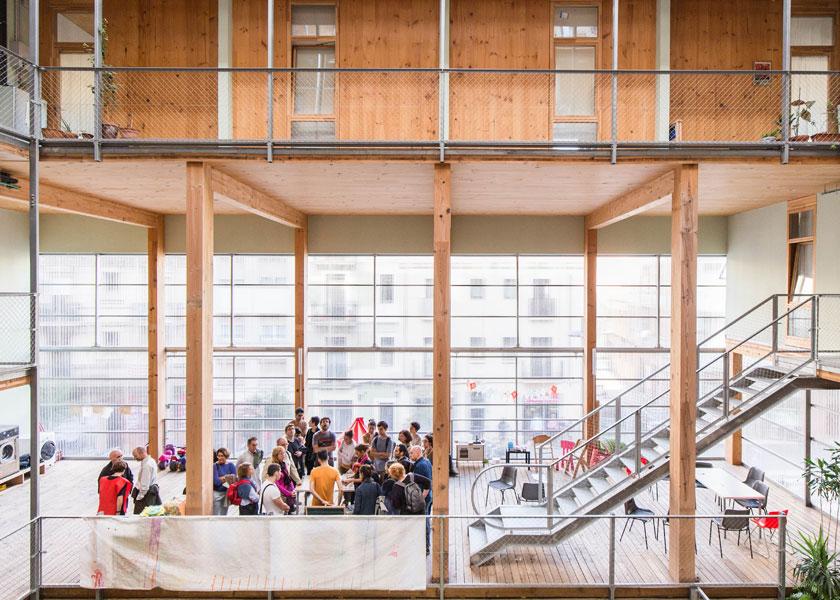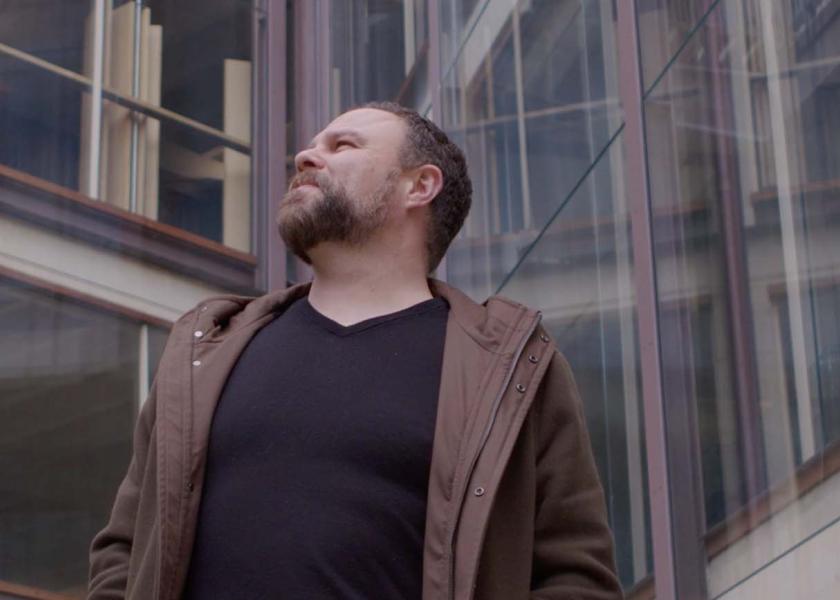Open House Madrid
Rediscover the city
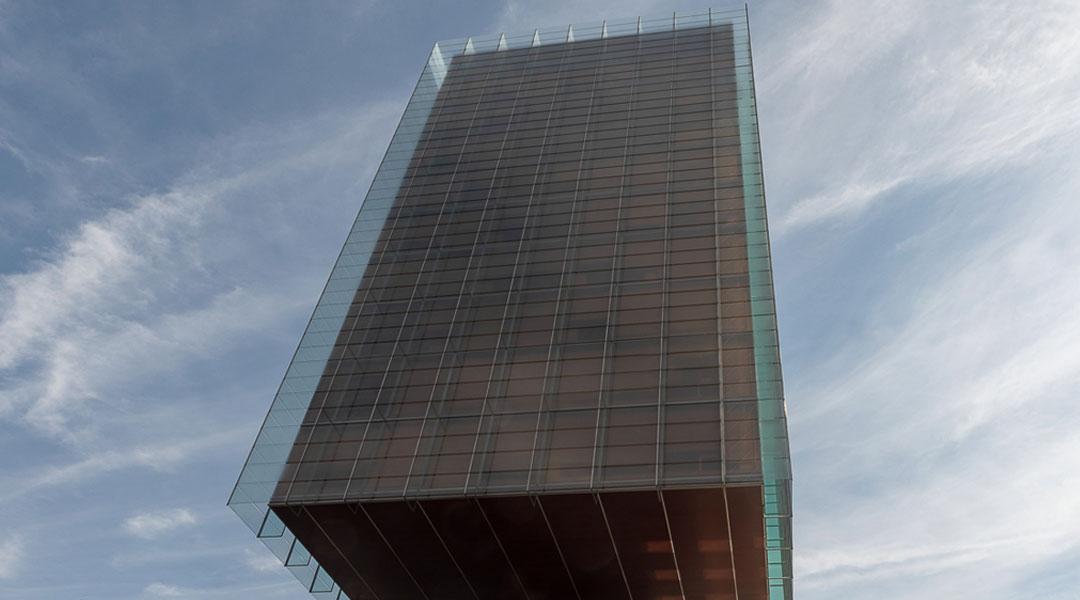
More than 120 spaces, many of them often inaccessible—from palaces to architecture studios—, open their doors to the public during the XI edition of the Open House Madrid international architecture festival, from the 25th to the 28th of September. To whet your appetite, here’s a small selection hand-picked by Raquel Arnaiz, winner of the Iberia Future Talent Award at the VII Premios Ciudad [7th City Awards].
The Open House Madrid festival, which is sponsored by Iberia, offers a unique opportunity to curious architecture fans. For four days, we can visit dozens of iconic buildings in the city, including many that are usually closed to the public, like the Colegio Reggio, the Corona de Espinas (home to the Spanish Cultural Heritage Institute) or the Grand Lodge of Spain, as well as several architecture studios. People can also do urban routes, always in small groups guided by specialists, and attend talks, workshops and exhibitions.
Held since 2015, this edition of the festival features the slogan Madrid se sale, which reflects the city’s current effervescence, a privileged destination that keeps attracting talent. Open House Madrid includes in its programme the VII Premios Ciudad [7th City Awards], which recognise the initiatives that promote more inclusive and sustainable urban city planning. Among the awards, one dedicated to new generations who promote urban transformation stands out: the Iberia Future Talent Award. This year, it was gived to Raquel Arnaiz, a telecommunications engineer and architecture student, for her academic excellence and social commitment. This is a selection of five buildings on the Open House Madrid list that this young winner invites us to discover.
Casa Árabe
Neo-Mudéjar beauty
Casa Árabe is one of the most innovative buildings from the end of the 19th century: the old Aguirre School, a pioneer in the mixed-gender children’s education system. It’s one of the best examples of Neo-Mudéjar architecture in the city and in 2025 it has been declared a Place of Cultural Interest. Be amazed by both the building—with bare brick walls and stone details—and its gardens and enclosure surrounding it. It’s also situated in a privileged location right in front of the Parque de El Retiro, in an area including the Landscape of Light, declared a UNESCO World Heritage site.
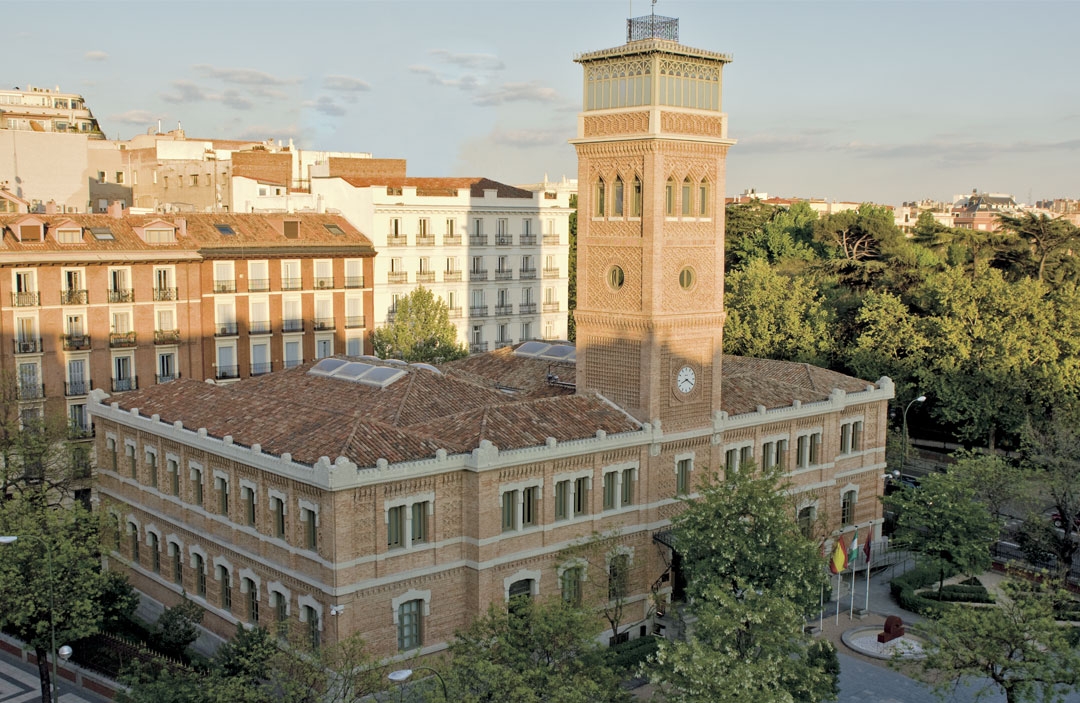
Casa Árabe is housed in the old Aguirre School, in front of the Parque de El Retiro. © David Spence for Open House Madrid
Iberia Hangar 6
As imposing as a cathedral
With its 31,000 square metres—which could easily fit two football pitches— the Iberia Hanger 6, in La Muñoza, is able to perform maintenance on ten aeroplanes. It’s not only its sheer size, the lack of pillars also pulls the eye upwards: if the space is completely open, what’s holding the ceiling up? The key to this feat of engineering can be seen on the outside, a giant yellow arc above the roof. This space, which is usually closed to the public, opens its doors for Open House Madrid festival.

Open House Madrid gives people the chance to discover the impressive Hangar 6 by Iberia. © Courtesy of Open House Madrid
Castelar Building
The glass-encased tower
The Castelar building, with its double-glazed casing, has a magnetic effect that leaves no one unmoved. It looks like a cube of light hovering a few metres above the ground. Achieving this effect required the innovative attitude and expertise of architect Rafael de La-Hoz Arderius. Years after it was built, his son, Rafael de La-Hoz Castanys, was in charge of entirely remodelling the building, making the floors open plan. It is currently home to the Pérez-Llorca law firm. Walking up the steps up to the base is an unforgettable experience and stepping into this masterpiece surpasses any expectations.

The Castelar building has been the headquarters of the Pérez-Llorca law firm since 2012. © Ximo Michavila for Open House Madrid
CaixaForum Madrid
A square with a vertical garden
The building, located on Paseo del Prado, functions as a social and cultural centre since 2008. It was created by Herzog & de Meuron by remodelling the old Central Eléctrica del Mediodía power station, built in 1899. The project involved removing a refuelling station which was opposite the building, creating a square for citizens to enjoy, a valuable contribution to improving the urban space. From there, we can admire the wonderful bare brick façade that has been integrated into the new structure and the vertical garden designed by French botanist Patrick Blanc. But CaixaForum warrants a leisurely visit because it is as interesting outside as it is inside.
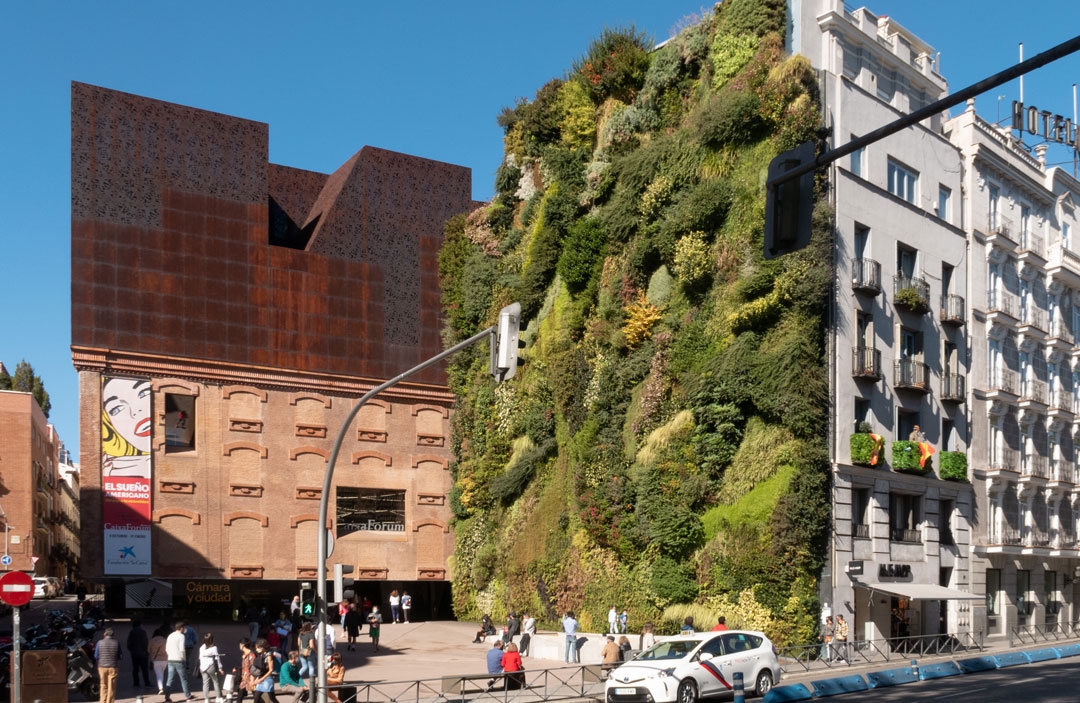
The CaixaForum Madrid building, on Paseo del Prado, with its stunning vertical garden. © Ximo Michavila for Open House Madrid
Vestibule of Pacífico
The metro of the 1920s
The former vestibule of the Pacífico metro station is surprising because of the attention to detail put into the design, and the feat of complex engineering that allowed people from Madrid to travel on underground transport in the 1920s. The vestibule—which today is part of the suburban museums, alongside the Pacífico Power Plant, the defunct Chamberí station and the Pear Tree Canals—is the result of the talent of Antonio Palacios (1874-1945), author of several architectural gems like the Cibeles Palace, the Hospital of Maudes, Casa Palazuelo, the Círculo de Bellas Artes or the Cervantes Institute.
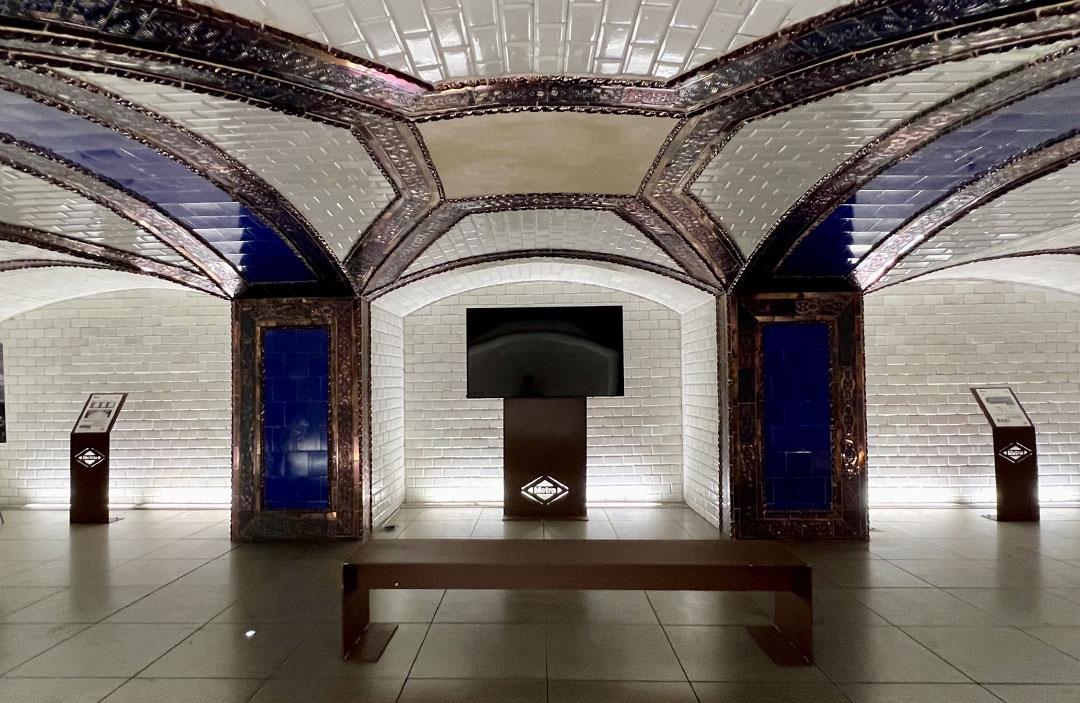
The former vestibule of the Pacífico metro station is part of the Madrid metro museum circuit. © Courtesy of Open House Madrid
Every year, Open House Madrid offers the public the extraordinary chance to discover some of the city’s real gems, step behind the curtain of architecture studios and rediscover urban landscapes. Madrid isn’t the only city hosting such a festival: Open House is a worldwide network covering more than 50 cities, from Barcelona or Zaragoza to New York, Buenos Aires or Hong Kong.
[Article created in collaboration with Raquel Arnaiz, winner of the Iberia Future Talent Award].
